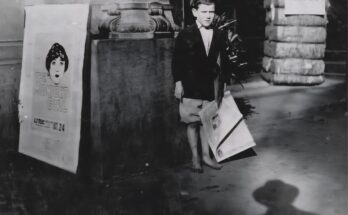Vilém Glanzberg was born in Prague, a city known for its beauty, intellect, and rich Jewish heritage. As a Czech Jew growing up in the heart of Central Europe, Vilém was part of a vibrant community deeply embedded in Czech cultural and intellectual life. Before the outbreak of the Second World War, Prague was home to a large and diverse Jewish population, many of whom contributed to the arts, sciences, and political thought of the region. Vilém’s early life would have likely reflected the quiet stability of pre-war Prague, with Jewish life flourishing despite the growing tensions in Europe.
The Nazi occupation of Czechoslovakia in March 1939 brought a swift and brutal end to this era of relative peace. Vilém, like all Jews in the Protectorate of Bohemia and Moravia, soon faced harsh restrictions. Jews were banned from holding jobs in public service, excluded from schools, and forced to register their property. Daily life became defined by fear, surveillance, and loss. As the war progressed, the systematic persecution intensified. Vilém, along with thousands of others, would have seen his world shrink dramatically under the weight of oppressive anti-Semitic laws.
In late 1941, the Nazis established the Theresienstadt Ghetto in the town of Terezín. Although it was portrayed as a “model ghetto” meant to deceive the outside world, in reality, it served as a transit point for Jews being sent to extermination camps. The ghetto was overcrowded, disease-ridden, and severely under-resourced. Vilém was eventually deported to Theresienstadt, where he joined tens of thousands of other Czech Jews living under appalling conditions. The illusion of relative safety in the ghetto could not disguise the dread of eventual deportation eastward.
On 18 May 1944, Vilém Glanzberg was put on a transport from Theresienstadt to Auschwitz. This date marks his final known movement, recorded in Nazi transport lists that stand today as grim remnants of the Holocaust’s administrative precision. The journey itself was brutal — crammed into cattle cars without food, water, or sanitation, deportees faced unimaginable suffering even before reaching the gates of the concentration camp. Vilém’s name, along with hundreds of others, appears in the transport logs for that day.
Auschwitz, located in occupied Poland, was the largest and most notorious of the Nazi death camps. Upon arrival, most Jews — especially the elderly, women with children, and those deemed unfit for labor — were sent immediately to the gas chambers. It is almost certain that Vilém was among them. He did not survive his deportation to Auschwitz. There is no evidence of his continued presence in the camp beyond the transport records, a chilling indication that he was likely murdered shortly after his arrival.
Vilém’s story, like that of so many others, was one of life brutally interrupted. He did not live to see the end of the war, the liberation of Auschwitz, or the rebuilding of Prague’s Jewish community. No personal documents, letters, or photographs remain to tell us who he was in life — his hopes, his dreams, his relationships. What survives is a name, a date, and the silence that followed. And yet, in that silence is the weight of a life stolen and a memory that demands to be honored.
His death is a single thread in the vast and tragic tapestry of the Holocaust, where millions were killed not for anything they had done, but for who they were. Remembering Vilém Glanzberg is an act of defiance against that erasure. His deportation and death are recorded not just as bureaucratic entries in a ledger but as testimony to the cruelty of a regime that sought to annihilate entire peoples. Every individual, like Vilém, had a story — a family, a history, and a future that was never allowed to unfold.
In remembering Vilém Glanzberg today, we affirm our collective responsibility to keep alive the memory of those who perished. His name stands as a symbol of the many who disappeared into the shadows of the Holocaust. Through education, remembrance, and the sharing of these stories, we honor them. Vilém was one of the six million Jews murdered by the Nazi regime, but more than that, he was a man with a name, a life, and a dignity that no evil could truly erase. May his memory — and the memory of all victims — be a blessing and a call to vigilance against hatred in all its forms.


